Fantasy wargamers are fascinated by race. From Warhammer to Warcraft to the all the major conflicts in The Lord of the Rings, race, and the racial composition of armies, is almost always the pivot point. In any fantasy wargame, the question, “Who do you play?” is always answered by race. “I play Dwarves,” or “I play Orcs,” or “I play Eldar.” Each race has its own Order-of-Battle, its own advantages and disadvantages. Dwarves are typically known for their ability to “tank,” soaking up and delivering damage in close quarters. They’re slow and plodding, but usually well armored. Elves are fast and agile, great archers, effective at a distance but unable to stick in a stand-up fight. Humans tend to do well all-around, generalists who provide balance to a battlefield.
Perhaps the most famous fantasy battle of all time, Tolkien’s Battle of Five Armies in The Hobbit, also pivots around race. It was fought between the Orcs, Eagles, Men of Dale, Wood Elves (note the sub-category there, races within races) and Dwarves. This doesn’t even account for the Wargs and Giant Bats that participated. There was even a Werebear if you count Beorn.
Ridiculous, right? Total fantasy. What a hoot!
Uh, not really, actually.
Tolkien’s treatment of race has its critics (see Saladin Ahmed’s explosive April, 2012 piece in Salon) but it’s important to remember that he was a linguist and historian long before he was a fantasist, and he drew deeply from the well of folklore and legend that has its roots in history. In a time when the world struggles to become more inclusive, and when the fantasy community in particular is working overtime to embrace real diversity, there are plenty of historical examples to draw upon. Fantasy wargames match race to capability, so let’s look at one of the greatest real armies of all time to see diversity at work in real life.
The Punic Wars
The great empires of Rome and Carthage fought a series of three major wars over more than a century. In the end Rome won, and as a result, I probably don’t need to tell you about them. But fewer people know that the Carthaginians were an African seafaring merchant empire with its capital in modern day Tunisia. For two decades, they occupied and dominated Europe, including modern day Spain, France and Italy. They produced the mighty Hannibal Barca, arguably one of the greatest generals in the history of warfare.
I want to note the role of women. Ancient historians don’t mention women much, and certainly don’t mention them as warriors. But the truth is far more complex. We catch glimpses of women fighting in ancient battles. We have Boudicea defying the Romans in ancient Britain, and Fulvia as one of the major belligerents in a Roman civil war. Women were always there, and always fighting (see Kameron Hurley’s amazing essay “We Have Always Fought”). The truth is that very, very little is known about ancient warfare, and male historians often discounted or ignored the military contributions of women. It would not surprise me to see Celtic or Scythian fighting women in the ranks of either army.
There’s a lot to discuss about the Punic Wars and their impact on world history, but here I want to focus, gamer-style, on the diversity of the troop types.
Diversity in the Carthaginian Army
Hannibal’s troops were polyglot and multiracial, drawn from all over the world. Like the Dwarves, Elves and Orcs of our fantasy wargaming table, each brought a different capability to the battlefield. Here they are, laid out gamer-style:
The Heavies – African Infantry
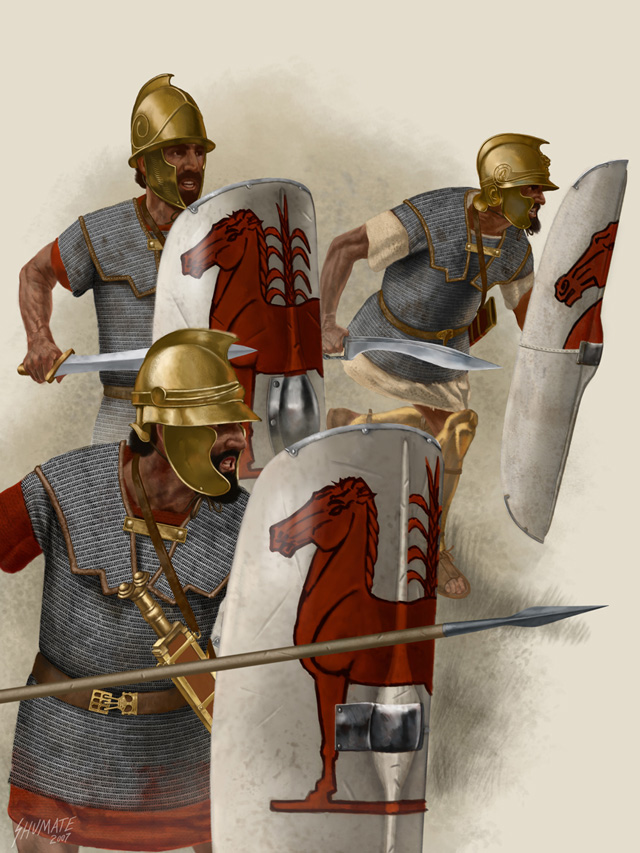
Hannibal’s core infantry were heavily armed and armored Carthaginians who fought in closely disciplined ranks. They were trained in the Greek style, using huge round shields and long spears to present a solid wall of death to the enemy, a line of iron and bronze. They were Africans all, drawn mostly from modern-day Tunisia, Libya and Algeria.
The Swarm of Hornets – Numidian Light Cavalry
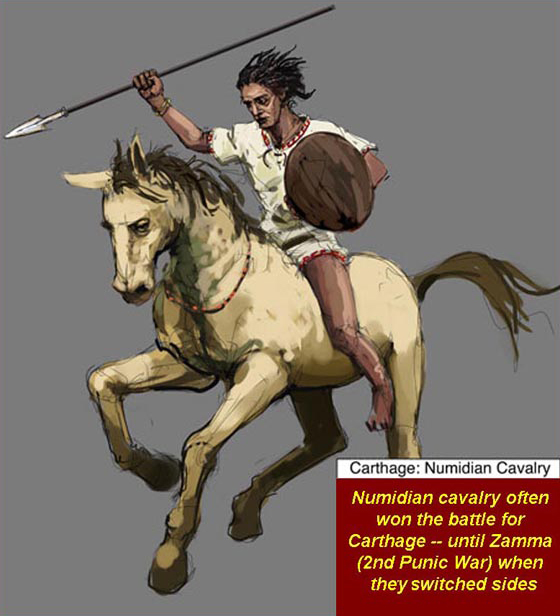
Hannibal drew heavily on the client kingdom of Numidia, in what is today Algeria and Morocco. Riding without saddles, bridles or stirrups, the Numidians were world-famous for their hit and run tactics, swarming around the enemy like a cloud of hornets. They were incredibly accurate with thrown javelins, and their only protection was a small round shield. They’d dash in, throw their javelins and then ride away as soon as anyone tried to engage them. The moment they thought the enemy was exhausted or had turned their backs (to run, for example), they would charge in and ride them down.
The Shock Troops
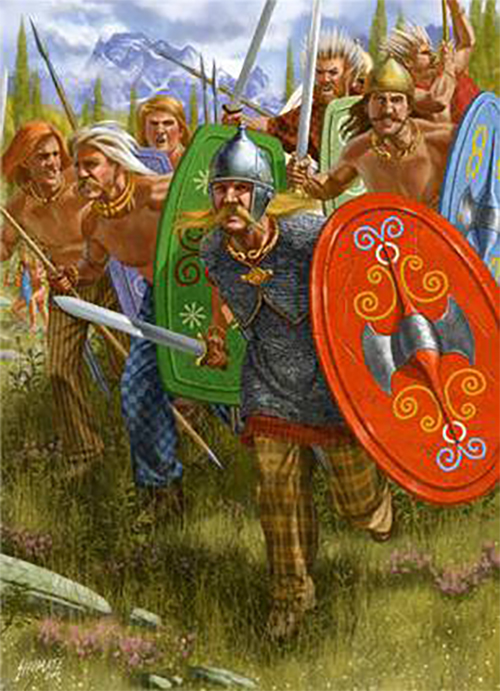
Called “the Gauls” by the Romans, these wild warriors came from modern day Spain, France, Italy, eastern Europe and even as far away as Britain. They were known to be wild and ferocious, but ill-disciplined. Only the richest of them had any armor, and many fought completely naked. They grew their hair long and often spiked it by washing it in lime-water. They would charge the enemy with ferocious war-cries, laying about with spears and (for the nobles) long slashing swords. They frequently lost heart if their initial charge was blunted, and it was hard to get them to move as part of a military formation or hold a defensive line.
The All-Arounders
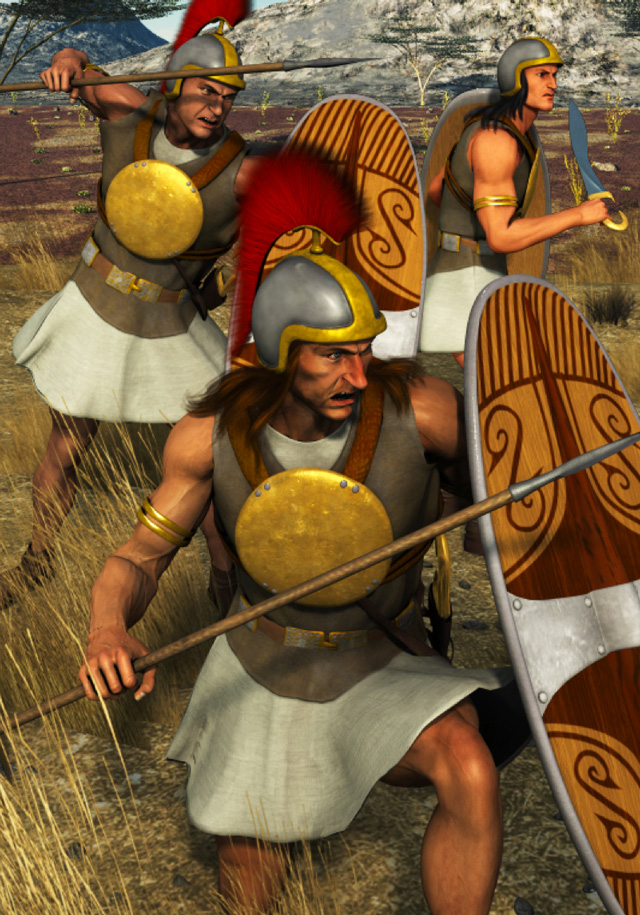
The Iberian tribesmen hailed from modern-day Spain, and provided a balanced medium to light infantry and cavalry force to Hannibal’s army. They usually wore little armor, and were famed for their stiff, crested hoods made of animal sinew. They are perhaps most famous for their scutarii, sword and shield fighters, and for their jinettes, a type of light cavalry that fought much like the Numidians by throwing javelins from horseback. The jinette style of fighting cavalry persisted all the way into the renaissance, and we hear about them in battles as late as the 1490s AD. The Balearic Islands off the coast of Spain also yielded famous units of slingers. Bred to use reed and animal sinew slings from their childhood, they were deadly accurate and often carried many slings of different lengths for different ranges. The spares were tied around their heads.
Traitors to Rome
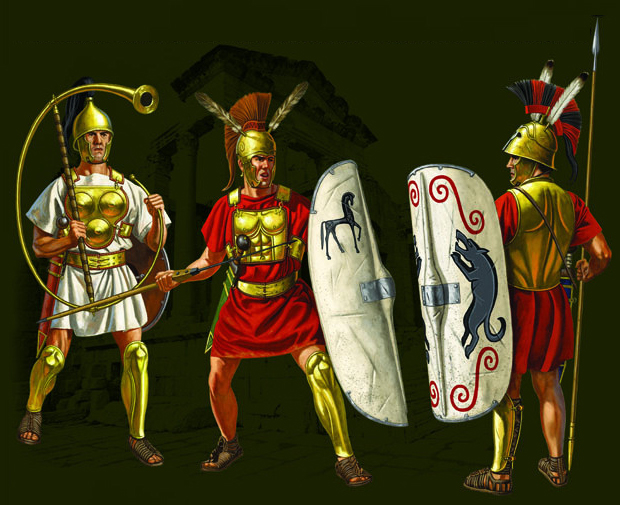
At the time of Cannae, the Romans didn’t dominate all of Italy. Most of the other cities outside Rome were colonia, Greek colonies that had grown into independent city-states which were later subjugated by Rome. Many of these were client-states to Rome, and when they saw Hannibal winning, they quickly switched sides and went to war for Carthage. Their troops were diverse and multi-faceted, with heavy and light cavalry, Greek style phalanx infantry and lighter auxiliary infantry.
Opportunists and Adventurers
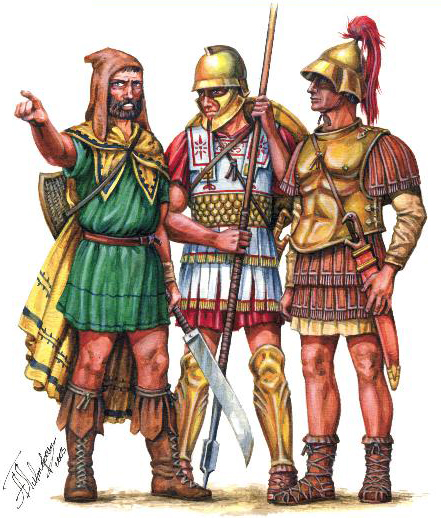
From modern-day Greece, Macedonia and Albania. These troops were the traditional Greek hoplites (think 300), fighting in close-order while wearing bronze helmets and linen corselets and carrying spears and shields. The Macedonians sometimes used enormous pikes held in both hands. They functioned as heavy infantry, same as the Africans, but were usually mercenaries, as opposed to citizens of Carthage.
Ancient Tanks
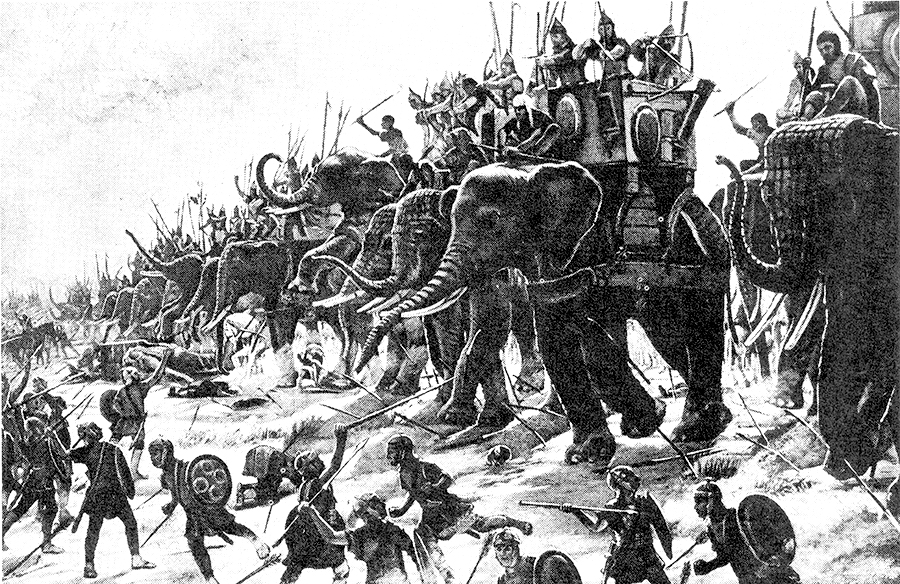
Like the Mûmakil from the Battle of Pelennor Fields, Hannibal used elephants in his army. The Carthaginians used mostly the now extinct North African Elephant, which were only around 8 feet tall, and too small to carry the elaborate towers we saw in The Return of the King. Still, they were terrifying to troops who had never fought them before, and every bit as unreliable as Mûmakil, just as likely to stampede into their own troops as they were to attack the enemy. It didn’t take the Romans long to figure out that if you just shot elephants with enough javelins, arrows and sling stones, they would go mad and rampage through their own lines.
And this is just one army in the vast ancient world! Hannibal understood the importance of what modern tacticians call “combined arms,” the understanding that different types of troops bring different capabilities to the battlefield. For Hannibal, the secret was in leveraging the strengths of each of the populations across the vast and incredibly diverse Carthaginian empire. This is only barely touching on the variety in the training, equipment and origins of these troops. Much more can be found in the few ancient writers whose works have survived. See for yourself in the writings of Polybius, Livy and Plutarch.
When you sit down to build your army of Tyrranids, or Gray Elves, or debate the strengths and weaknesses of White Hand Uruk-Hai versus Red Eye Orcs out of Barad-Dur, it’s not so far fetched after all.
opens in a new window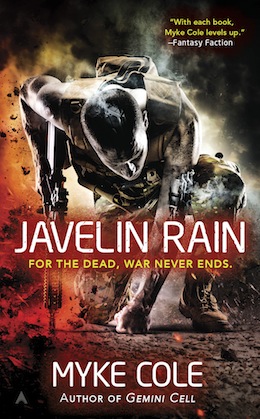 Myke Cole is the author of the military fantasy Shadow Ops series. His latest novel, Javelin Rain, will be published by Ace/Roc on March 29th. As a security contractor, government civilian and military officer, Myke Cole’s career has run the gamut from Counterterrorism to Cyber Warfare to Federal Law Enforcement. He’s done three tours in Iraq and was recalled to serve during the Deepwater Horizon oil spill. He’s also a huge history nerd and tabletop wargamer. You can often find him simulating ancient battles in 1/72 scale at the Metropolitan Wargamers Society in Park Slope.
Myke Cole is the author of the military fantasy Shadow Ops series. His latest novel, Javelin Rain, will be published by Ace/Roc on March 29th. As a security contractor, government civilian and military officer, Myke Cole’s career has run the gamut from Counterterrorism to Cyber Warfare to Federal Law Enforcement. He’s done three tours in Iraq and was recalled to serve during the Deepwater Horizon oil spill. He’s also a huge history nerd and tabletop wargamer. You can often find him simulating ancient battles in 1/72 scale at the Metropolitan Wargamers Society in Park Slope.











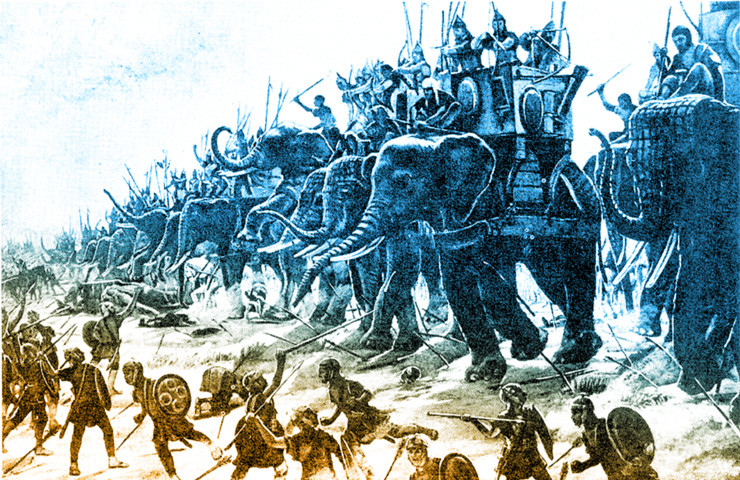
Although an interesting article, I find it ironic that in a discussion of diversity in ancient armies, there is a brief nod to female warriors, and then a list of “Gauls were all shock troops” and “Numidians were light cavalry”
Quick linguistic note: the word jinete is in use to this day, as the Spanish word for rider. The word for knight is caballero, from caballo — that is to say, horse. (Compare with the French cavalier, or the German Ritter.)
I could quibble about the use of the word “African.” African is not one thing. Africa is the most ethnically and geographically diverse continent on Earth. So if you’re going to break Europeans down into Gauls, Iberians, Greeks, etc., it’d be more fitting to distinguish what specific types of Africans we’re talking about here. Carthaginians were North Africans as a rule, but was there admixture from sub-Saharan peoples?
This article seems to conflate racially diverse with culturally diverse. Not the same thing at all.
It’s interesting to note that all the photos show variations of Caucasians.
The Gaul’s image looks more like the classical Vikings.
All respect to Johnny Shumate as an artist. But the man seems to not vary his models much. Just the clothes and armor they wear.
The images collected as a whole, look more like a limited Pintrest collection than an attempt to help a conversation about diversity in books.
No distinction between the cultural mixes that made the Carthaginians? Carthage was a Phoenician colony city built on North Africa, with the original colonists coming from Tyre. It had people descended from Phoenicians, Lybians, Berbers, not to mention people that came from their own colonies in Sardinia, Malta and Sicily. Their religion was Phoenician and many of the accusations the Hebrews made in the Bible against their kindred (like human sacrifice) were done by the Romans and the Greeks, though not all the time. Of course, the Romans accused almost everyone that wasn’t their friends of human sacrifice, from druids to early Christians.
This piece is a decent look at how multi-ethnic ancient empires drew on the various traditions and troop types of their constituent peoples, but I don’t think it’s making a strong argument about diversity in societies that are often based on more medieval settings. Of course, stories that use ancient empires as inspiration should reflect that empires are amalgams of different peoples and cultures, many with their own specialties in weaponry, tactics, and traditions.
There’s not really an argument about “racial” diversity being made here. Fantasy races aren’t really analogous to different human cultures. The differences between entire humanoid species could and should be much larger than the cultural and geographic differences between human cultures.
A good overview, Myke. And don’t let the pedants get you down. With the subject of diversity you can only pick where to stand before being picked apart. It’s inevitable, no matter how well intentioned.
Christopher LBennett: “I could quibble about the use of the word “African.” African is not one thing. Africa is the most ethnically and geographically diverse continent on Earth. “
As I understand it (and I’m happy to be corrected) the term Africa and African had yet to be applied to the entire continent. In Roman times it signified the coast of what is now North to North West Africa and ended before Egypt.
Braid_Tug @@@@@ 5
The pictures themselves look right, more or less. The Carthaginians and their allies were white Mediterranean types and “Arabic” looking to modern eyes, besides the Celts. The Numidians would’ve been the darkest. Look at Ryamano @@@@@ 6 and others.
As far as racial diversity, the Carthage army isn’t a great example. Hardly any ancient or medieval ones are. Cultural diversity, OTOH, is another matter.
But fewer people know that the Carthaginians were an African seafaring merchant empire with its capital in modern day Tunisia.
Carthage was a Phoenician colony. It was founded by settlers from Tyre in Lebanon. So, in terms of origin, they were Middle Eastern/Levantine, not African.
As an ancient historian, I was both pleased to see this topic brought up and disappointed in how it was addressed. Here’s my hastily assembled thoughts:
http://co-geeking.com/2016/03/22/race-and-culture-in-hannibals-army/
As others have said already, the Carthaginians were Punic, which was of Syria-Palestine geographic origin and part of the Semitic language family.
The Berbers and Numidians might well have been darker skinned, but they likely weren’t as dark as a south or central African would be. If I remember correctly, Spaniards were essentially Gauls, which was a huge ethnic super-group that encompassed peoples ranging from Spain to Britain to Asia Minor. Each Gallic sub-group of course interbred with various local peoples, Greeks or Picts or whatever, and any time a foreign conqueror stayed for a few generations you’d have further additions to the local gene pool (Romano-British and Gallo-Roman for north and west Europe, and given the long Punic occupation of large parts of Spain there were probably similar developments there prior to the Roman conquest of the peninsula).
A fine example of a true ethnically diverse army would be the late antiquity Roman army, or many of the steppe hordes. The former often used discrete units of foreigners as auxiliaries, while the latter typically included only a core of whatever tribe ruled the horde, relying instead of large numbers of conscripts and levies from conquered peoples.
@12: Thank you!!!!! A great response.
I’ll be reading more of your blog later.
To my knowledge, there is only a single semi-reliable source that any Celts, and in that case only one particular tribe among many, fought naked. Polybius gives two reasons why they fought naked on that occasion: machismo and to prevent their clothes from snagging on the brambles.
Naturally, the Gaesatae were routed by the Roman velites, while the other Celts, who apparently had some kind of textile armour, were broadly unaffected.
@6, the difference with the case of Punic child sacrifice as opposed to alleged Christian and Druid human sacrifice is that the archaeological record bears out that the Romans were factually correct in this case. There are known grave markers with inscriptions attesting to the death of the interred person by sacrifice.
Now on the topic of Roman insistence that they themselves never practiced human sacrifice, despite games/spectacles, strangling enemy generals on the steps of the temple of Jupiter at the end of a triumph, etc. . . .
@1: well, the author is coming at this from a wargaming perspective, and as a wargamer who played Carthaginians when I was young I can tell you that that is how you build up a Punic army, by picking the best troops from each of the various nationalities to make a whole that is (hopefully) greater than the sum of its parts. So you take Numidian cavalry for skirmishing, elephants and gauls for shock troops, spanish scutarii to hold rough terrain and libyan spearmen to give you a solid backline.
Now from a historical perspective each of the different groups was more militarily diverse than that (the Numidians frequently fielded complete armies in thier own right, as did the Iberians and the Gauls) but as a wargamer there’s no reason to bother with anything but the best: Numidian infantry are awful (although Roman training could sometimes make something half decent out of them), Gallic cavalry are a little subpar, etc. Some gaming systems (WAB, DBM and DBMM all do this) will try to force some degree of crap on you, such as by making you take scads of gribbly Numidian and Libyan javelinmen before you can get to those juicy spanish caetrati or balearic slingers, but overall most games encourage a ‘pick and mix’ approach.
That makes Punic armies more fun to play than some others, since you get a lot more choice and variety on the tabletop, but it also demands a greater degree of skill (skill that I do not possess, my record with Carthaginians is pretty abysmal) to harmonise the various diverse fighting styles into a coherent and successful whole. And that is actually pretty historically accurate, as real life Carthaginian armies have a pretty atrocious record against the Greeks and Romans; only Hannibal consistently had the necessary genius to make something beautiful out of the hodge-podge he commanded.
@3 & 6 the evidence suggests that the Carthaginians preferred to keep their phoenician blood relatively free of african influences. Livy gives us the story of Muttines, an officer commanding Numidian cavalry in Sicily during the Second Punic War, who had to put up with all manner of crap from his colleagues because, unlike them, he was not true Punic but a Libyphoenician of mixed Punic and African ancestry. This, combined with their resentment of his superior talent, led said colleagues to undermine him at every turn until eventually he defected to the Romans, where the consul Marcus Valerius Laevinus sponsored him for the citizenship under the name Marcus Valerius Mottones.
Erik Jensen @@@@@ 12
Nice one. Thanks!
As has been said, the whole point of this article was to show that armies are made up of different races/countries/cultures/origins/groups. All Myke was trying to show is that, in wargaming terms, an army made up of, say, Carthaginians, Gauls, Numidian cavalry, etc., is fairly realistic, and each group fought more or less with the traditional and best-devised means of their “group”. He’s just trying to show that the whole army wasn’t just “Carthaginians, who were all brown-skinned and male and fought the same way”.
This is very much a broad, generalizing wargaming-perspective article bringing up some points that armies weren’t monolithic. I think anyone trying to go deeper and discuss ideas about “race vs. culture” etc. are trying to make this article into something that it’s not.
. . . and the continent itself, going by Herodotus and some old maps, was “Libya.”
And about racism in the modern sense, I think–I think–I detected more than a hint of it in Tolkien’s third Ring volume, that last big war.
Since a lot of SF lazily conflates race with culture, this article works fine.
Classic SF loves to paint peoples with broad simple colours. All dwarves are like this. Hobbits are all that. This is what giants are. And so on.
There are not too many works out there that have two or more distinct cultures for featured non human races.
Thank you for this very interesting article!